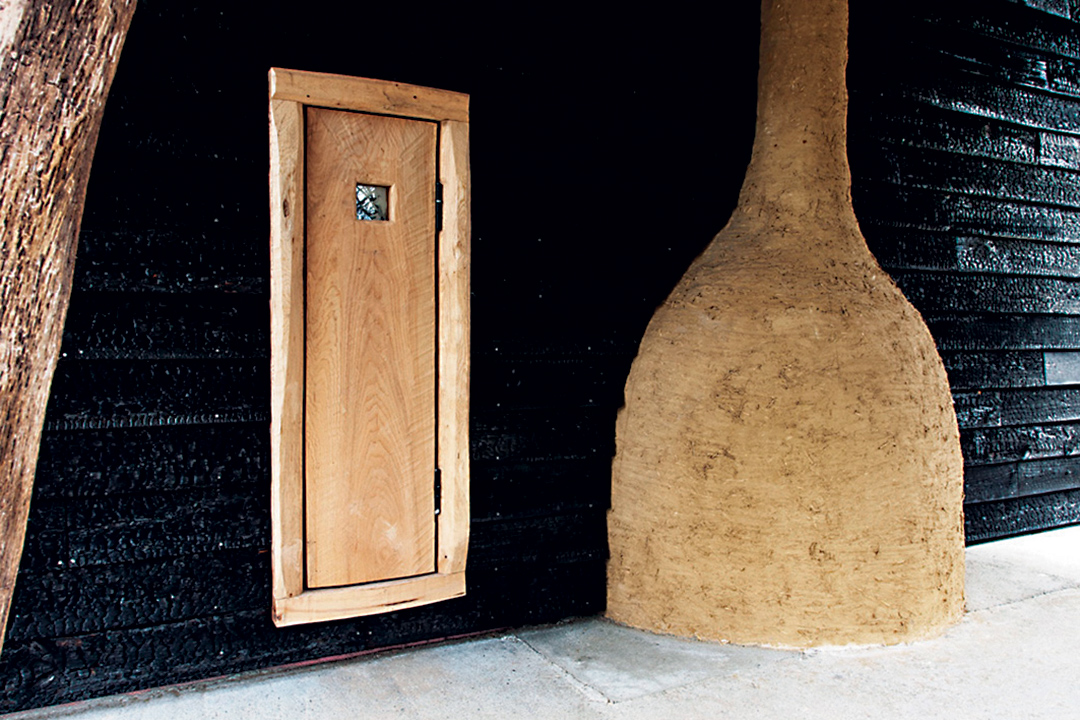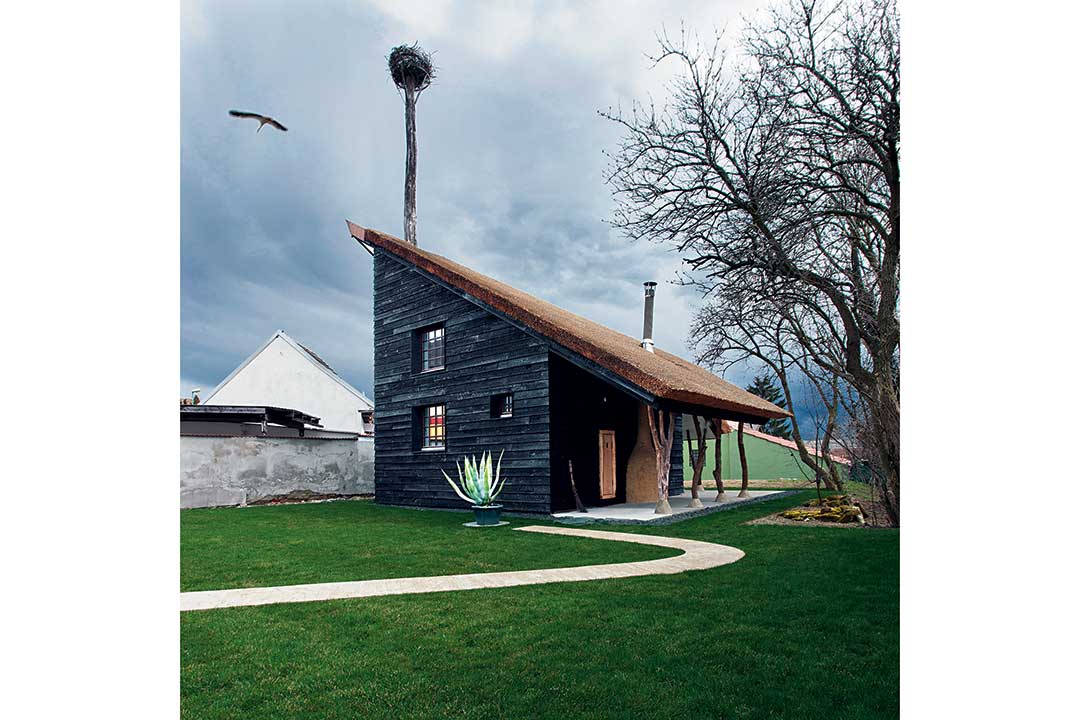Burgenland has not always been a place to go to for contemporary architecture. Burgenland underwent profound transformation in the period after 1990. New wineries, public buildings and family houses were built with a distinct contemporary character, and the bucolic landscape, rich cultural heritage and organic agriculture made the quality of life a main brand of the entire region.
Raiding is a tiny market town just off the southern end of the S31, which made headlines in 2006 when the Franz Liszt Concert Hall, designed by Atelier Kempe Thill, opened. The subtly austere and masterfully positioned building sits in a park opposite the birthplace of the composer, giving an uncompromisingly contemporary edge to the musical programs which make Raiding a place of Liszt und Lebensqualität. Given this background, local ideas to use innovative architecture to reflect on vernacular heritage and connect with global cultural networks seem hardly surprising. The Raiding Foundation, an initiative of Austria-born, Japan-based filmmaker Roland Hagenberg, set out in 2010 to do exactly this. Besides inviting ten leading Japanese architects to create small guesthouses in Raiding, other programs including exhibitions on Japanese architecture and art as well as concerts by Japanese musicians have been building ties between the village and the international creative scene.

Just a short walk from the concert hall, the Storkhouse stands on a narrow, oblique plot between old family houses lining the street. Pulled back to the middle, the tiny guesthouse is surrounded by the archetypical volumes of neighboring buildings and the trees. A fitting scenario for the intimately eccentric architecture of Tenurobu Fujimori. The maverick architecture historian spent his early career researching forgotten Western-style architecture in Japan, establishing interdisciplinary research groups like the Architectural Detectives or the Roadway Observation Society. The group’s long-term, extensive fieldwork and award-winning, influential publications on unexpected urban details and patterns were not unlike Venturi and Scott-Brown’s projects a decade earlier. This personal touch and close attention to details was carried on to Fujimori’s work as a designer, where his projects involve friends, clients and partners collaborating in the construction process.
The Storkhouse is the first of the ten retreats, available in a club membership scheme benefiting maintenance and further cultural programs. Its concept highlights another Burgenland phenomenon (besides famous musicians above all Joseph Haydn at Esterházy Castle in Eisenstadt), namely a large number of storks nesting in the area of the Lake Neusiedl, one of the largest inland lakes in Central Europe. The key element of the house is thus a pole holding a nest for storks on the top, with the rest of the building leaning against it, almost as if humans moved in only after the storks settled. The tree of the pole, just like other supporting structural elements, is exposed and kept in its natural shape. This sculptural appearance and the otherwise simple volume respond to the neighboring buildings as much as to the trees in the gardens. The façade is clad with a localized version of Shou-sugi-ban, a Japanese tradition which uses burnt and oiled cedarwood finish to provide insulation against fire, pests and water. While this and some details are remarkably similar to other projects like the Yakisugi House, the craft-like, tactile qualities create a sense of personal signature by Fujimori rather than just a globalized version of vernacular, do-it-yourself modernism.
Inside, the spaces are almost elementary, but just like the architectural details, they twist the basics to the point where they are as otherworldly as familiar, as if speaking the language of the local village architecture with foreign words. The single volume interior is only structured by a gallery and a utilities box, with all finishes reduced to white walls and natural wood surfaces. The furniture has the same treatment in forms as well as materials, so the overall atmosphere is that of a single, unified environment, where the intricately crude details emphasize the scale of craft, handwork and intimacy instead of architectural assemblages.

However, despite the ornamental patterns covering the wall above the fireplace and quirky natural shapes of the tree trunks, this is not a project of symbolism or nostalgia. When Fujimori first appeared on the international scene, the difficulties critics had in pinning down his architecture were obvious in many of their reviews. References ranged from Rudofsky’s authorless vernacular through ecological utopianism to critical perspectives on modernism. Fujimori himself cites several sources of inspiration from modernist to period architecture as well as his personal touches on urban spaces uncovered in his research. In this case, the Storkhouse is situated in an environment which has retained much of its several hundred year vernacular culture and which is becoming increasingly comfortable with connecting this heritage to the 21st century. Crafts, tools, untreated and raw aesthetics have also become values cherished in an age of information, networks and crisis. From such a perspective, this project is an exercise in negotiating regional tourism, branding, global culture and everyday material practices. Just as the house is less of a statement on architecture than on making spaces, its accessories are pieces custom-made by designers working for large global brands. The textiles of Angelica Steudel and the ceramics of Setsuko Nagasawa are as much part of this process as the high-tech toilet representing some of the more eccentric elements of Japanese culture.
Back outside, the space under the roof and the fenceless green opening to the street might be the strongest ambient references to the informal urban spaces of Japan, subtly orchestrating the transition back to the Raiding streetscape. It will be exciting to see how this interaction unfolds and where it takes the community when all ten guesthouses are built.